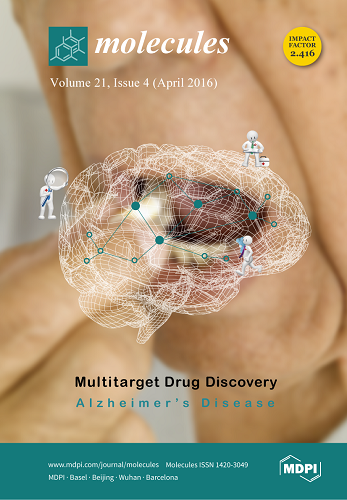As a candidate for bioherbicide, 4,8-dihydroxy-1-tetralone (4,8-DHT) was isolated from
Caryospora callicarpa epicarp and its two enantiomers,
S-(+)-isosclerone and
R-(−)-regiolone, were separated by chiral high-performance liquid chromatography (HPLC) on a Chiralcel OD column with chiral stationary phase (CSP)-coated cellulose-tris(3,5-dimethylphenylcarbamate). Then, the
[...] Read more.
As a candidate for bioherbicide, 4,8-dihydroxy-1-tetralone (4,8-DHT) was isolated from
Caryospora callicarpa epicarp and its two enantiomers,
S-(+)-isosclerone and
R-(−)-regiolone, were separated by chiral high-performance liquid chromatography (HPLC) on a Chiralcel OD column with chiral stationary phase (CSP)-coated cellulose-tris(3,5-dimethylphenylcarbamate). Then, the phytotoxicity of 4,8-DHT and its enantiomers toward the seeds germination and seedling growth of the five tested plant species, including lettuce (
Latuca sativa), radish (
Raphanus sativus), cucumber (
Cucumis sativus), onion (
Allium cepa), and wheat (
Triticum aestivum), were investigated and the results indicated a hormesis at low concentration of 4,8-DHT and its enantiomers, but a retardant effect at high concentration. Between the two enantiomers of 4,8-DHT, the
S-(+)-isosclerone was more toxic to seeds germination and seedling growth of the five tested plant species than the
R-(−)-regiolone, and also the phytotoxicity of
S-(+)-isosclerone varied with different plants. For example,
S-(+)-isosclerone was the most active to seedling growth of lettuce, indicating that
S-(+)-isosclerone had specific effects on different organisms. Thus, all of the chirality and concentration of 4,8-DHT, as well as the affected plant species, need to be taken into consideration in the development and utilization of 4,8-DHT.
Full article


